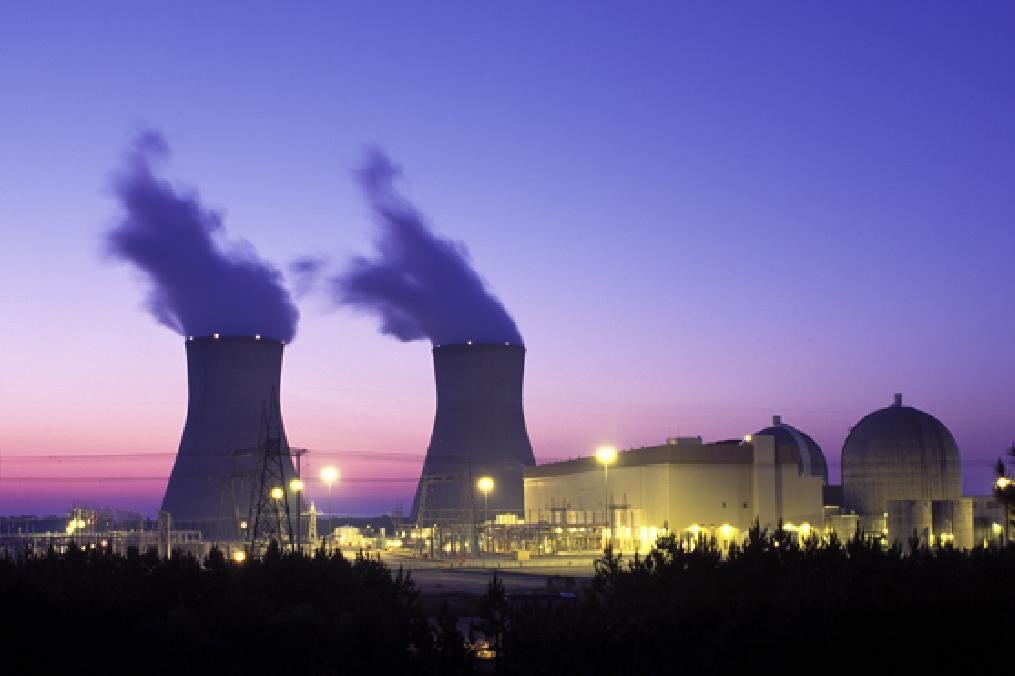
Georgia Power announced the completion of cold hydro testing for Vogtle Unit 3 at the company’s nuclear expansion project near Waynesboro, Ga. Vogtle Unit 3 construction is now approximately 94% complete, with the total Vogtle 3 & 4 expansion project approximately 88% complete. The completion of the cold hydro testing milestone prepares the site for the last major test remaining for Unit 3, hot functional testing, ahead of initial fuel load.
“Every milestone achieved at the Vogtle 3 & 4 project represents another major step towards operations of the first new nuclear units in the U.S. in more than 30 years,” said Paul Bowers, chairman, president and CEO of Georgia Power. “Completion of cold hydro testing not only helps pave the way for initial fuel load, it also moves us closer to bringing online a carbon-free asset that will provide clean energy for our customers, our state and the country for the next 60 to 80 years.”
Cold hydro testing of Unit 3 confirmed the reactor’s coolant system functions as designed and verified the welds, joints, pipes and other components of the coolant system and associated high-pressure systems do not leak when under pressure. As part of the testing, the reactor coolant system was filled with water and pressurized above-normal operating conditions, then lowered to normal design pressure while comprehensive inspections were conducted to verify the systems meet design standards.
Georgia Power continues to expect to meet the November 2021 and November 2022 regulatory-approved in-service dates for Units 3 and 4, respectively.
Reactor Coolant Pump Completes First Run
The Vogtle 3 & 4 project also successfully started up the first reactor coolant pump (RCP) on Unit 3, marking a first for both the project and for an AP1000 in the U.S. This initial run verifies the RCP operates as designed. During operations, the RCPs will circulate water through the reactor vessel and steam generators, providing forced flow of the reactor coolant through the reactor core, to the steam generator and then back again to support operations.
Vogtle 3 & 4 Operators Receive Licenses
Additionally, the Nuclear Regulatory Commission (NRC) has issued the first operator licenses to 62 Reactor and Senior Reactor Operators for Vogtle 3 & 4. To receive a nuclear operator license from the NRC, license holders must demonstrate they possess the required knowledge, skills and abilities to safely and effectively operate the plant.
The multi-year process for obtaining an operator license begins with extensive training in reactor theory, thermodynamics and system operation in the classroom and field. The operators spend months in the Main Control Room simulator running various scenarios under normal and emergency conditions to help ensure that the operators can safely respond to any issue or event. This process culminates with a two-week examination administered by the NRC.
2020 Milestones Achieved
Completion of Closed Vessel Testing for Unit 3 – The completion of this milestone prepares Unit 3 for cold hydro testing, which is required ahead of initial fuel load. Closed Vessel Testing verifies the pipes and valves in the Unit 3 reactor coolant system were installed as designed and helps ensure safety systems function properly.
Completion of the Structural Integrity Test and Integrated Leak Rate Test – The structural integrity test and integrated leak rate test were completed in succession and demonstrated the containment vessel meets construction quality and design requirements.
Placement of the final module for Unit 3 – The water tank that sits atop the containment vessel and shield building roof, known as module CB-20, is a major part of the AP1000 reactor’s advanced safety system and will hold approximately 750,000 gallons of water ready to flow down in the unlikely event of an emergency to help cool the reactor.
Placement of the Unit 3 integrated head package (IHP) atop the reactor vessel – Standing 48 feet tall, weighing 475,000 pounds and containing more than three miles of electrical cables, the IHP will eventually be used by highly-trained nuclear operators to monitor and control the nuclear reaction that will occur inside the Unit 3 reactor vessel.
Completion of Open Vessel Testing for Unit 3 – This successfully demonstrated how water flows from the key safety systems into the reactor vessel ensuring the paths are not blocked or constricted, and confirmed the pumps, motors, valves, pipes and other components of the systems function as designed.
Placement of the polar crane and containment vessel top for Unit 4 – This signifies that all major lifts inside the containment vessels for both units are now complete.
With more than 7,000 workers on site, and more than 800 permanent jobs available once the units begin operating, Vogtle 3 & 4 is currently the largest jobs-producing construction project in the state of Georgia.
Benefits to Customers
The new Vogtle units are an essential part of Georgia Power’s commitment to deliver safe, clean, reliable and affordable energy for customers. Once operating, the two new units at Plant Vogtle will be able to power more than 500,000 homes and businesses and provide customers with a new carbon-free energy source that is expected to put downward pressure on rates for 60 to 80 years. A diverse fuel mix, including nuclear, is also essential to maintaining a reliable and affordable energy infrastructure that attracts new investment, supports economic growth and creates jobs.






